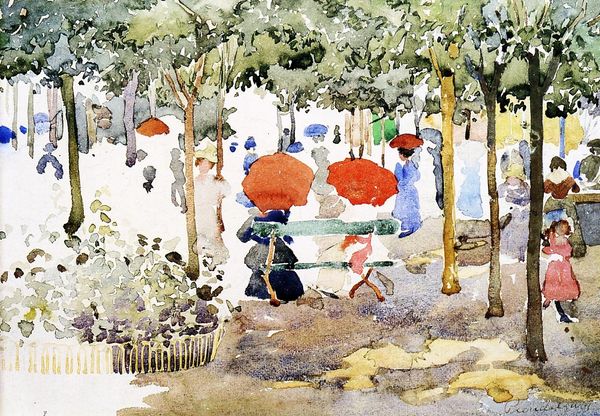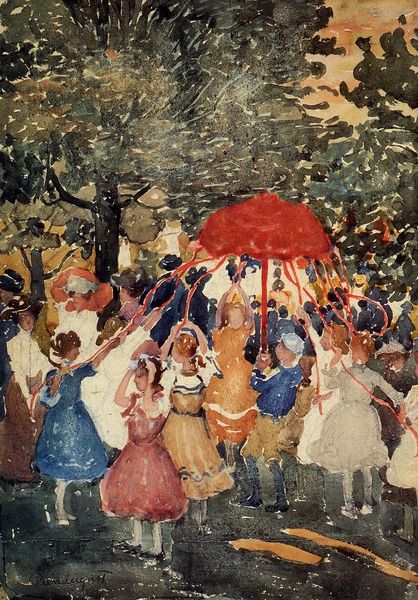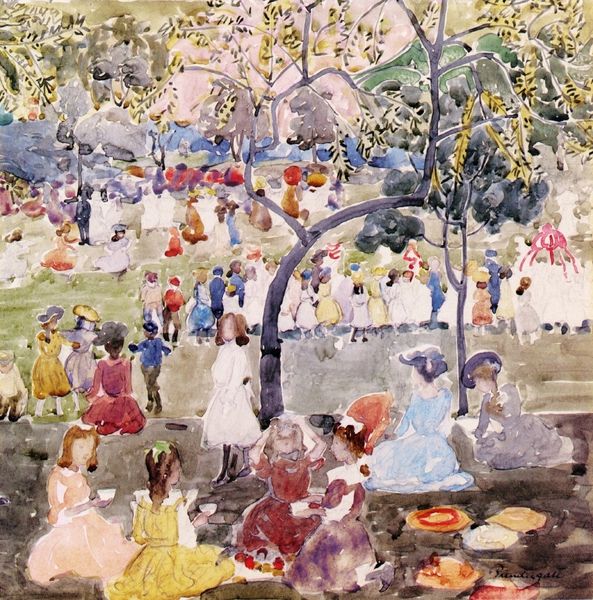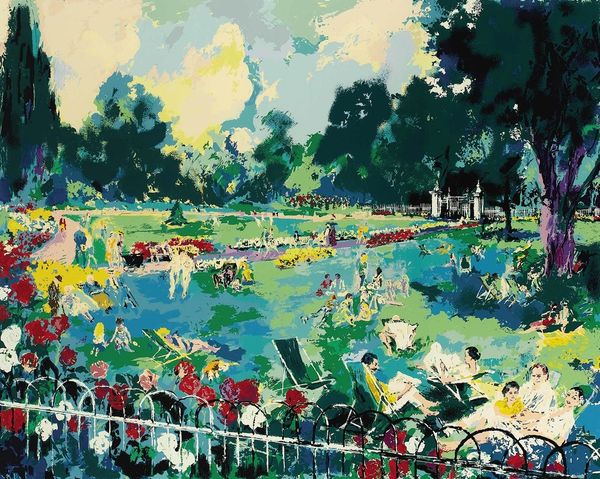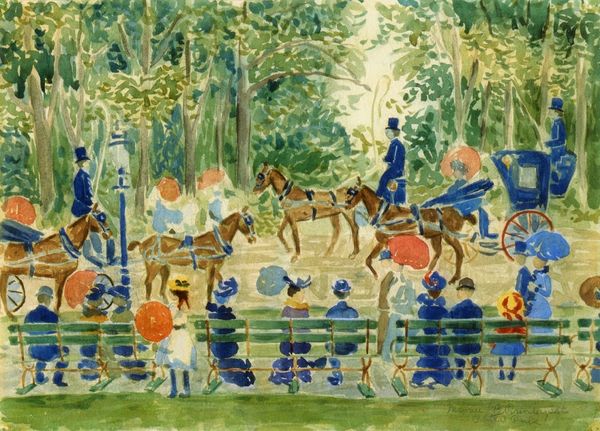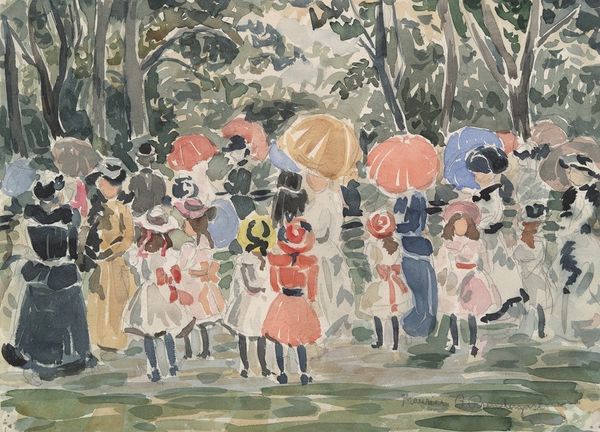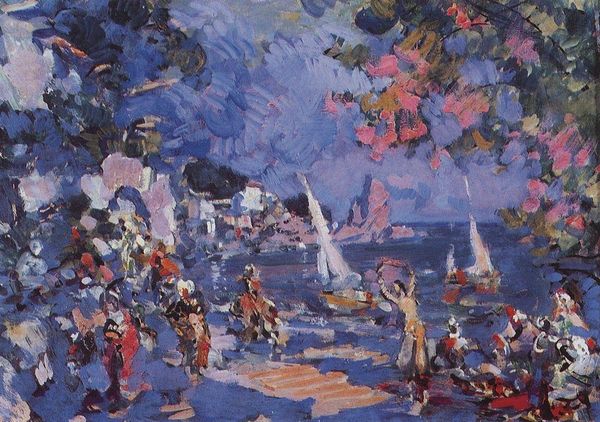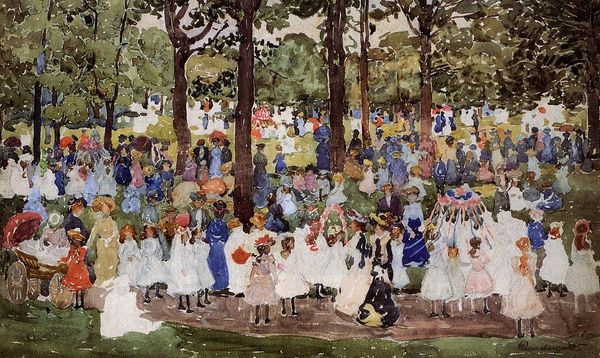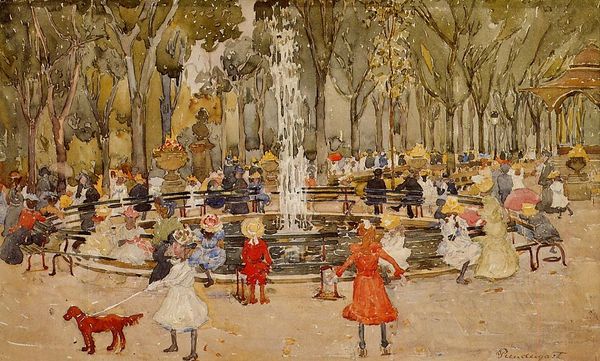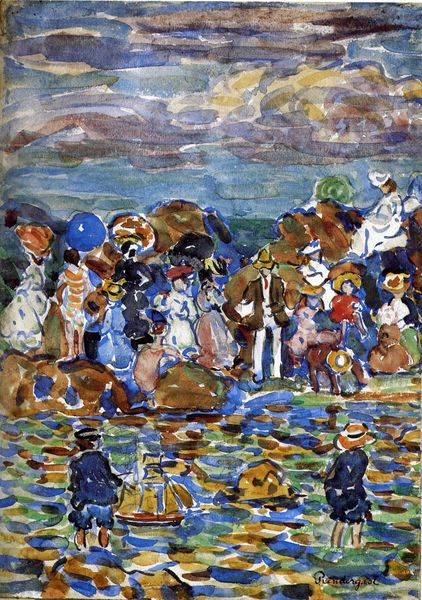
Dimensions: 36.2 x 55.88 cm
Copyright: Public domain
Editor: This is "Central Park," painted by Maurice Prendergast around 1901, using watercolor and graphite. The airy brushstrokes create a feeling of fleeting moments, like snapshots of people enjoying the park. What compositional elements stand out to you? Curator: Consider how Prendergast orchestrates space. See how he positions figures – note their relatively flat planes that nevertheless articulate an active volume of near, middle and far distances through careful sizing. Note that a line of benches is carefully set against and below horse drawn carts and strolling individuals in a somewhat densely canopied grove of trees. Observe the rhythm he generates using repeating and contrasting hues— reds against blues, all supported with shades of green and yellow--are juxtaposed for effect. What structural logic might the image be said to have? Editor: I notice how the bright colors of the umbrellas and hats draw my eye across the image. The blue benches provide a horizontal grounding, balancing the verticality of the trees. What do these choices imply? Curator: Quite right, such careful orchestrations generate visual relationships, not mere illustrations of an observed moment. I encourage you to carefully evaluate how Prendergast’s color placements operate alongside and in relation to his articulation of positive and negative space; for example, observe how areas lacking detail nonetheless manage to shape and underscore adjacent forms, alluding to what could almost be termed "Cubist" orchestrations of volume and depth that Prendergast develops. To be sure, he manipulates semiotic dimensions – here by implying leisurely pursuits of refined ladies -- yet note how the artistic construction is foregrounded as his paramount ambition. Is it, at base, truly a mimetic exercise? Editor: I hadn't considered the painting as almost proto-Cubist, but now that you mention it, I see how he uses planes of color to suggest form. This has certainly given me a new way of approaching Prendergast's work. Curator: Indeed! A keen awareness of its design and compositional rigor allows appreciation of an image such as this. It should enable us to view familiar impressions, as never before.
Comments
No comments
Be the first to comment and join the conversation on the ultimate creative platform.

